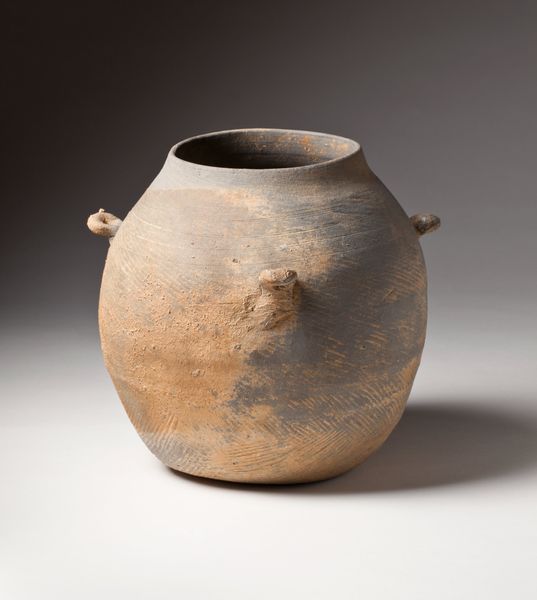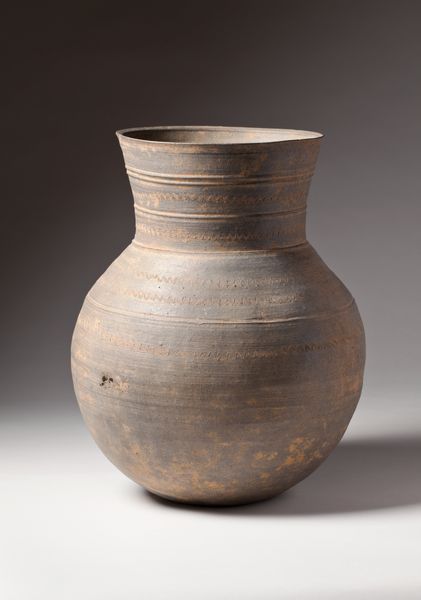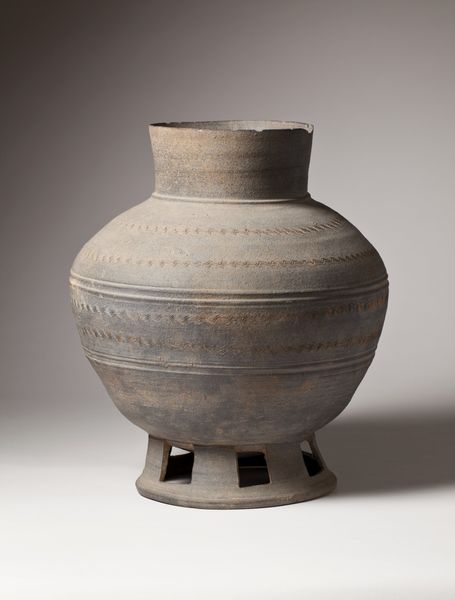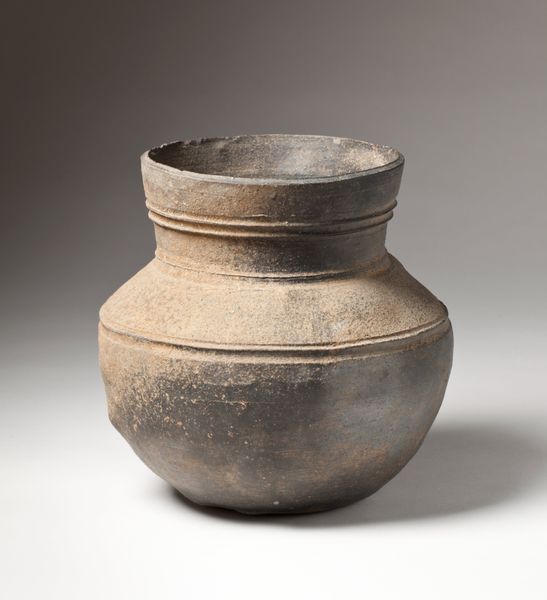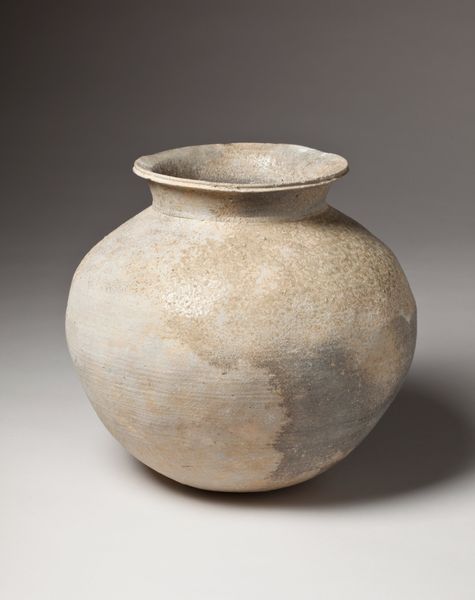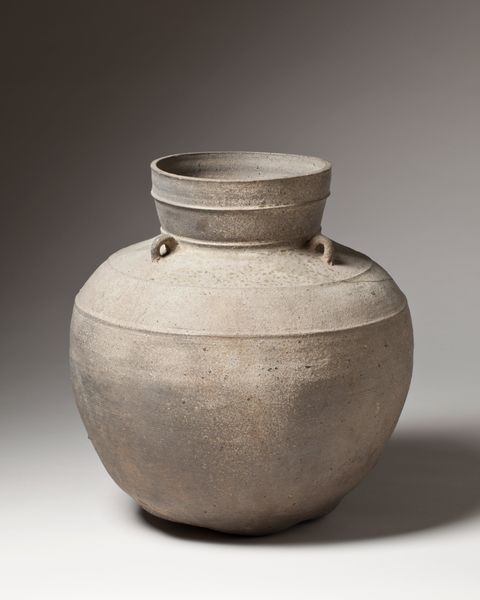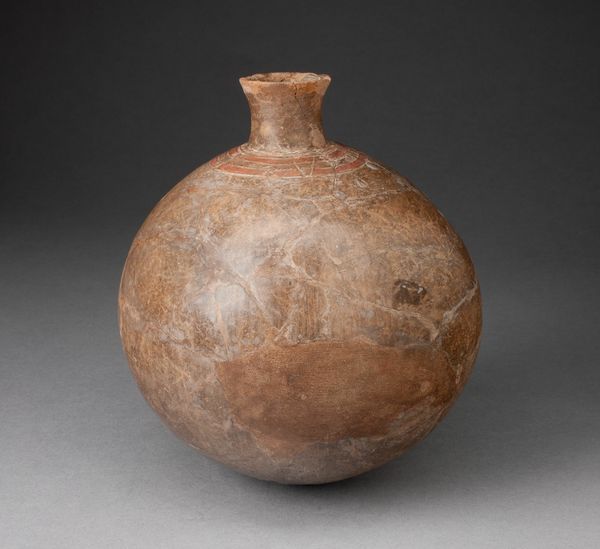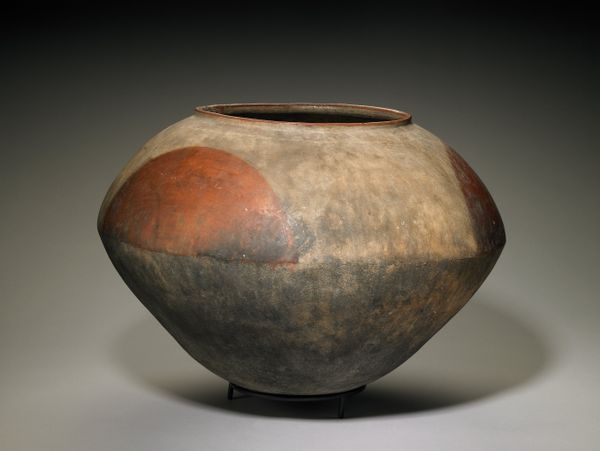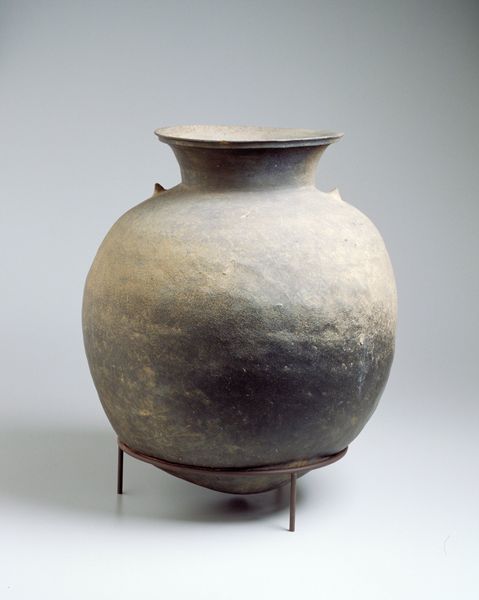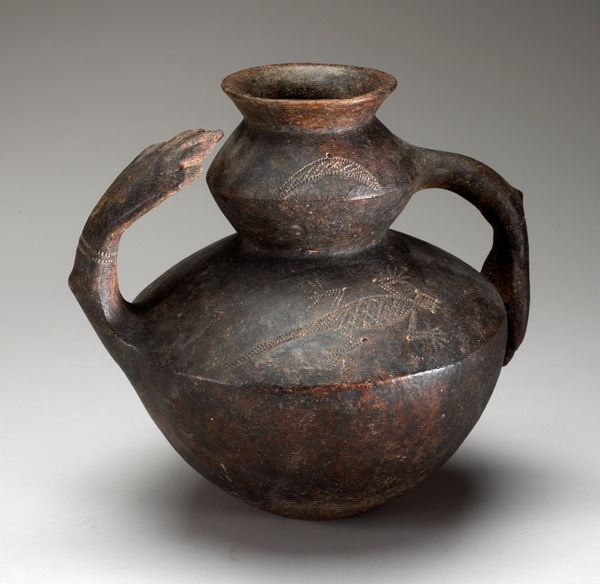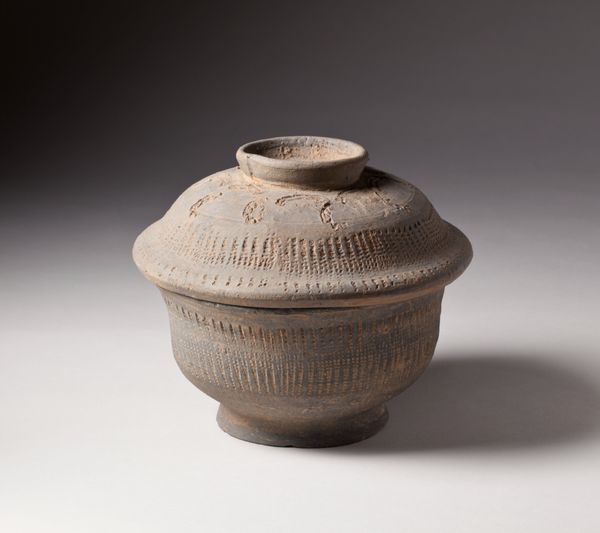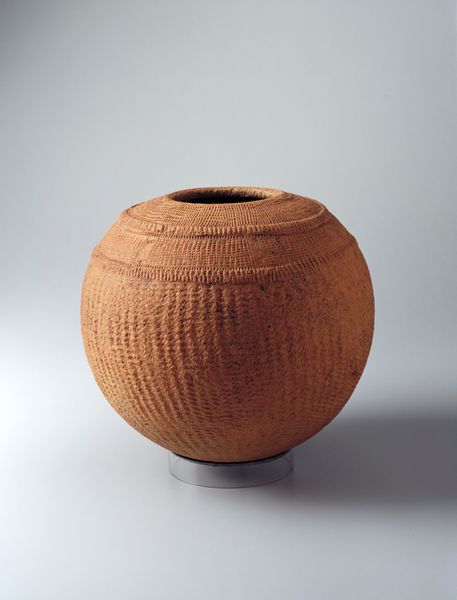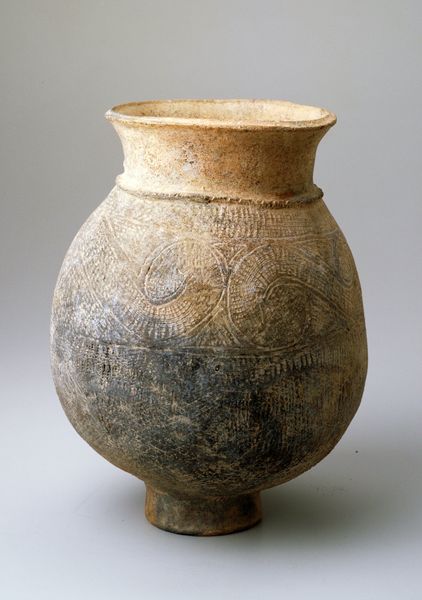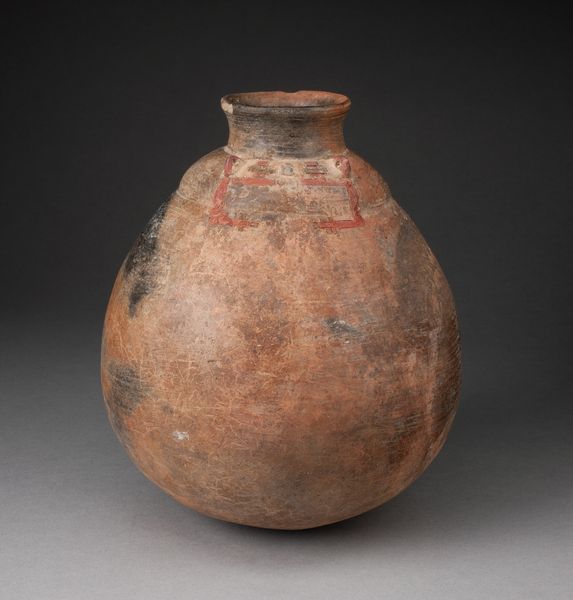
ceramic, earthenware
#
ceramic
#
earthenware
#
ancient-mediterranean
#
ceramic
#
islamic-art
Dimensions: 7 1/2 × 7 5/8 × 7 3/4 in. (19.05 × 19.37 × 19.69 cm)
Copyright: Public Domain
Editor: Here we have a ceramic jar, believed to be from the late 5th to early 6th century. It's an anonymous piece, and quite earthy – both in color and texture. There's something elemental about its form and the rough markings along the base. What sort of stories can you read in this object? Curator: It’s intriguing, isn’t it? Notice how the four knobs, almost like vestigial limbs, break the symmetry. The incised lines wrapping the body create a tactile language. Think about the hands that formed this vessel. The fingerprints left, literally and figuratively, upon the clay. What purposes could that rough texture serve? Is it decorative, utilitarian for grip, or perhaps symbolic, meant to evoke ideas of nature? Editor: It definitely makes you think about the maker’s intentions. I’m curious about the four knobs. Do you see any symbolic weight in the use of that number? Curator: Four is potent with symbolic resonance. Think of the four cardinal directions, the four seasons. Might it be a representation of completeness, of encompassing the world? Perhaps it relates to cosmological beliefs of the time, a container not just for earthly goods, but for spiritual essence. Islamic art often weaves together the practical and the spiritual, hinting at a deeper, cosmic order. Editor: That’s fascinating – seeing it not just as a functional object, but as a reflection of a worldview. Curator: Indeed. Even in its anonymity, the jar speaks volumes. It invites us to consider the layers of meaning embedded within simple forms. Editor: I’ll certainly look at pottery differently now! There’s a whole universe contained within this ancient vessel.
Comments
No comments
Be the first to comment and join the conversation on the ultimate creative platform.
